By 2025, over 90% of European businesses will have transitioned from ISDN to IP-based telephony, according to the European Telecommunications Network Operators Association (ETNO). This marks one of the most significant shifts in the region’s communication infrastructure, a transition driven by efficiency, scalability, and the need for seamless cross-border connectivity.
But with this transformation comes a new challenge: choosing the right SIP trunk provider among a growing field of options. The European telecom market is vast, diverse, and highly fragmented, with providers excelling in different areas like compliance, latency, or multi-country coverage. A business operating across the UK, Germany, and Spain may face completely different pricing models, regulatory standards, and technical conditions in each market.
That’s why this guide exists, to cut through the noise and help you identify the best SIP trunk providers in Europe based on what truly matters: reliability, transparency, and interoperability. Whether you’re a startup expanding across borders or an enterprise migrating from legacy systems, we’ll break down which providers deliver stable uptime, region-specific routing, and cost clarity.
We’ll begin by understanding why SIP trunking has become essential in Europe’s telecom transition, then move into selection factors, provider comparisons, and practical setup guidance, all grounded in real market data and expert evaluation.
Why SIP Trunking Has Become Essential in Europe’s Telecom Transition
From ISDN to IP: The European Migration Timeline
Europe’s telecom landscape is undergoing a historic shift, one that’s nearly complete in several key markets. Germany, France, and the Netherlands have already phased out ISDN entirely, while the UK’s PSTN and ISDN networks will be fully switched off by 2027, according to Ofcom. This transition represents the end of circuit-switched telephony and the full embrace of IP-based voice infrastructure.
The change isn’t optional. Regulatory bodies across the EU are pushing operators toward IP migration to modernize connectivity, standardize interoperability, and reduce maintenance costs tied to aging copper networks. ETNO estimates that maintaining legacy infrastructure costs operators up to 40% more annually compared to IP networks, a burden that’s increasingly unsustainable.
For businesses, this means SIP trunking isn’t just a modernization effort, it’s the new standard for voice communication. It delivers the same reliability as traditional telephony but with greater flexibility, enabling remote management, dynamic scaling, and seamless integration with Unified Communications (UC) platforms. The pressure to comply with modern IP standards and reduce dependency on outdated hardware has made SIP trunking a necessity, not an upgrade.
Economic Benefits for SMEs and Enterprises
SIP trunking delivers direct financial and operational gains for organizations of every size. According to ETNO’s 2024 market analysis, companies that migrate from legacy voice systems to SIP trunks reduce communication costs by up to 60%, primarily through the elimination of on-premise gateways and lower international calling rates.
Beyond savings, SIP trunking’s scalability and centralized control are what make it indispensable for distributed teams. Instead of juggling multiple contracts and carriers across countries, a company operating in the UK, Spain, and Poland can manage its entire voice infrastructure through a single SIP network, consolidating billing, support, and capacity planning.
That unified approach translates into fewer administrative headaches, predictable costs, and consistent call quality across borders. For enterprises expanding across Europe, or SMEs adapting to hybrid work, SIP trunking enables one interconnected system that evolves with the business, rather than holding it back through regional complexity.
Key Factors When Choosing a SIP Trunk Provider in Europe
Network Coverage and Local Presence
When evaluating SIP trunk providers in Europe, network coverage and local presence are the foundation of voice quality. Each Point of Presence (POP) acts as a regional access node that shortens the physical distance between your PBX and the provider’s core infrastructure. The closer the POP, the lower the latency, and with VoIP, latency beyond 150 milliseconds can noticeably degrade audio clarity.
Providers with multiple POPs across Europe, for instance, in London, Frankfurt, Amsterdam, and Paris, can route calls more efficiently and maintain consistent Mean Opinion Scores (MOS) above 4.0, a benchmark for enterprise-grade quality. However, regional nuances matter: some carriers excel in Western Europe, leveraging dense fiber networks and Tier-1 interconnects, while others offer better routing and reliability across Eastern Europe, where latency can fluctuate due to longer backbone paths.
DIDlogic’s global backbone mitigates this challenge through direct European interconnects, minimizing packet loss and optimizing call routing across both mature and emerging markets. The result is stable performance whether your operations are centered in Berlin or Bucharest, ensuring your business voice traffic remains crisp and uninterrupted.
Pricing Models and Transparency
Pricing can make or break the value of a SIP trunking solution. Most providers follow one of two billing structures, per-channel or usage-based.
- Per-channel pricing reserves a fixed number of simultaneous calls for a set monthly rate, ideal for predictable traffic.
- Usage-based billing charges only for minutes used, offering flexibility for seasonal or campaign-driven businesses.
You’ll also see flat-rate and tiered pricing models. Flat-rate plans simplify budgeting, while tiered pricing lowers per-minute costs as volume increases, suitable for high-throughput environments like call centers.
The real costs often hide in the details: setup fees, DID purchases, minimum usage thresholds, or porting charges can inflate your monthly spend. Many businesses overlook these when comparing providers, leading to unexpected invoices.
Pro tip, run a pricing audit checklist:
- Verify all recurring and non-recurring charges.
- Confirm whether international rates vary by destination zone.
- Ask for minimum-usage requirements.
- Check whether DIDs are bundled or sold separately.
- Review contract terms for scalability or cancellation fees.
Transparent providers, like DIDlogic, list all charges upfront, letting businesses forecast communication budgets accurately.
Compliance, Security, and Number Portability
Telecom compliance in Europe is complex, and SIP trunking providers must adhere to regional and EU-wide frameworks. GDPR governs how voice data is stored and transmitted, while lawful-intercept regulations require operators to maintain auditable traceability. In addition, the STIR/SHAKEN framework, already enforced in North America, is gradually being adopted by European carriers to combat call spoofing and fraud.
Providers that manage voice traffic across borders must also ensure local caller ID presentation and number portability. Businesses switching from legacy lines or expanding into new markets should verify that their provider supports geographic portability, retaining local numbers in multiple EU states without service disruption.
For multinational companies, compliance isn’t just a legal checkbox, it directly impacts scalability. A non-compliant provider can block expansion or delay onboarding in countries with strict telecom licensing. DIDlogic, by contrast, aligns with EU data residency and cross-border routing policies, offering enterprises peace of mind when deploying SIP trunks at scale.
Integration and API Capabilities
A SIP trunk is only as powerful as the systems it connects to. Modern providers must support seamless integration with PBX platforms like Asterisk, 3CX, and FreePBX, and UCaaS tools such as Microsoft Teams or Zoom Phone. API-based provisioning has become the new standard, allowing IT teams to automate trunk creation, update routing tables, and access real-time analytics dashboards without manual configuration.
Developers and IT admins increasingly favor providers offering RESTful APIs and detailed call event logs, which enable advanced routing logic, fraud detection, and usage monitoring. Unified dashboards also allow quick visibility into jitter, latency, and packet loss, metrics essential for SLA compliance.
| Provider | PBX Integration | UCaaS Compatibility | API Access | Analytics Dashboard |
| DIDlogic | ✔ (Asterisk, 3CX, FreePBX) | ✔ (Teams, Zoom Phone) | ✔✔✔ (Full REST API) | ✔✔✔ (Real-time) |
| VoIPstudio | ✔ (3CX, FreePBX) | ✖ | ✔ | ✔ |
| Twilio | ✔✔✔ (Customizable) | ✔✔✔ (All UCaaS) | ✔✔✔ | ✔✔✔ |
| RingCentral / 8×8 | ✔ | ✔✔✔ | ✔ | ✔✔ |
With this level of interoperability, DIDlogic stands out for businesses seeking both developer flexibility and enterprise reliability, integrating effortlessly with existing infrastructure while offering the control and visibility modern operations demand.
Quick Comparison Table: Best SIP Trunk Providers in Europe
Choosing the right SIP trunk provider often comes down to balancing coverage, transparency, integration capability, and uptime. The table below summarizes how leading European and global providers compare across these dimensions, helping businesses quickly identify the service that aligns with their operational priorities.
| Provider | Coverage | Pricing Transparency | Integration Ease | Best For | Reliability (Uptime) |
| DIDlogic | Global (30+ countries) | ✔ Transparent | ✔✔✔ (API & PBX) | SMEs, Enterprises | 99.99% |
| VoIPstudio | UK, EU | ✔ | ✔ | Local SMEs | 99.9% |
| Twilio | Global | Partial | ✔✔✔ (Developer APIs) | Tech Startups | 99.9% |
| 8×8 / RingCentral | EU, Global | ✔ | ✔✔ | Enterprises | 99.99% |
Among these providers, DIDlogic offers the most balanced combination of global reach, transparent pricing, and deep integration capabilities. Its multi-region presence across London, Frankfurt, Amsterdam, and Madrid ensures minimal latency and consistent uptime across the continent. The platform supports both developer-grade APIs and traditional PBX systems, making it equally effective for scaling startups and established enterprises managing complex, cross-border infrastructures.
While Twilio leads in programmability and 8×8/RingCentral excel in unified communications, DIDlogic stands out for delivering enterprise-level reliability with flexible, transparent pricing, a key factor for businesses seeking scalability without locking into rigid contracts.
Setting Up SIP Trunking in Europe: What Businesses Need to Know
Technical Prerequisites
Before provisioning a SIP trunk, it’s essential to ensure your network and hardware can handle VoIP traffic with consistency. Each G.711 codec call requires roughly 64 kbps of dedicated bandwidth, excluding overhead. For businesses managing multiple concurrent calls, capacity planning is critical, for instance, 100 simultaneous calls would require at least 10 Mbps of stable, low-latency bandwidth.
Compatibility is another cornerstone. SIP trunks must integrate seamlessly with your existing IP PBX or cloud-based system, whether you’re running platforms like Asterisk, FreePBX, or 3CX, or a unified solution such as Microsoft Teams. Confirm that your provider supports SIP over TLS and SRTP encryption to ensure secure signaling and media transport.
Redundancy cannot be an afterthought. Establishing dual internet paths, ideally through separate ISPs, ensures failover continuity in case of network interruptions. Providers such as DIDlogic recommend routing diversity to maintain 99.99% uptime and avoid call drops caused by single-point failures.
Configuration and Testing
Once technical readiness is confirmed, configuration follows a structured workflow. The standard setup sequence includes:
- Order the SIP trunk, choose desired channels and local DIDs.
- Configure PBX credentials, input SIP server, username, password, and outbound proxy.
- Test inbound and outbound calls, verify signaling stability and audio quality.
During testing, Quality of Service (QoS) monitoring is crucial. Metrics such as jitter (<30 ms) and packet loss (<1%) directly correlate with perceived call quality. Tools like Wireshark or built-in PBX monitors can provide packet-level diagnostics, while enterprise providers such as DIDlogic include real-time dashboards for active session monitoring, MOS tracking, and route analysis.
Running periodic load simulations, even with test numbers, helps ensure the network maintains quality during concurrent call spikes.
Scaling and Maintenance
As call volume fluctuates, scalability becomes the defining advantage of SIP trunking. Traditional telephony required physical lines for every new channel; SIP trunks, by contrast, scale virtually. During marketing campaigns or seasonal surges, businesses can add temporary capacity through auto-scaling trunks or pay-as-you-grow models, expanding voice capacity instantly without contract renegotiation.
Ongoing maintenance should include monthly call quality audits and route performance reviews. Track recurring patterns in jitter, latency, or failed calls, and cross-check them against provider logs. Regular analysis not only preserves call quality but also helps forecast when to expand bandwidth or routing resources.
With continuous monitoring and adaptive scaling, companies maintain a reliable, future-proof voice network that supports growth without unnecessary infrastructure costs.
The Future of SIP Trunking in Europe (2025–2030)
Europe is entering its final phase of telecom modernization. By 2030, traditional PSTN and ISDN networks will be fully decommissioned across all EU member states, completing a migration that began nearly two decades ago. Once this transition concludes, SIP and VoIP will stand as the sole backbone for enterprise and consumer voice communication, cementing their role as the continent’s digital standard.
The next evolution of SIP trunking won’t be about connectivity alone, it will be defined by intelligence and adaptability. Providers are already integrating AI-driven call routing, capable of analyzing real-time network conditions to dynamically select the lowest-latency paths. The same AI systems are being used for fraud detection, identifying irregular call patterns within milliseconds and blocking suspicious routes before revenue leakage occurs.
Voice analytics will also take center stage. Businesses are beginning to treat call data as a source of insight, tracking sentiment, compliance, and performance through speech recognition and NLP models. As these systems mature, SIP trunking will shift from being a cost-efficient communication tool to a strategic data asset that informs operational and customer experience decisions.
On the infrastructure side, edge-based SIP routing and multi-cloud voice networks are reshaping how calls traverse continents. Instead of routing through centralized data centers, edge nodes positioned closer to users, in cities like Frankfurt, Madrid, and Warsaw, will reduce latency and jitter to near-zero levels. The adoption of multi-cloud architectures ensures call resiliency even during regional outages, distributing traffic across AWS, Google Cloud, and private backbone networks.
DIDlogic’s network is already built for this next era, leveraging redundant global interconnects, low-latency edge routing, and API-based provisioning designed for AI and analytics integration. As Europe moves toward an entirely IP-driven future, DIDlogic remains positioned at the forefront of a telecom landscape that’s not just faster and cheaper, but smarter, more resilient, and built to evolve.
Frequently Asked Questions
What is the average SIP trunk price in Europe?
SIP trunk pricing in Europe typically ranges from €8 to €25 per channel per month, depending on the provider, included minutes, and geographic coverage. Usage-based plans may start as low as €0.005 per minute for outbound calls within the EU. Costs are influenced by routing quality, regulatory fees, and whether the provider includes DID numbers or charges them separately.
Can I keep my existing phone numbers when switching to SIP trunking?
Yes. Most European SIP trunk providers support number portability, allowing businesses to retain existing geographic or national numbers during migration. The porting process usually takes 3–10 business days, depending on the country’s telecom authority. Maintaining the same numbers ensures continuity for customers and avoids disruptions in business communication or local caller ID recognition.
Which providers offer the best uptime guarantees?
Top-tier European SIP trunk providers such as DIDlogic, 8×8, and RingCentral offer uptime SLAs of 99.99%, achieved through redundant data centers and geographically distributed routing. These guarantees are backed by real-time monitoring and automatic failover systems, ensuring continuous call availability even during maintenance or regional network outages.
Do SIP trunks support toll-free and local DIDs?
Yes. SIP trunks can include both local geographic numbers and toll-free DIDs across multiple European countries. Businesses can purchase numbers that reflect their market presence, for example, a UK 020 number or a Germany 030 number, while toll-free lines allow inbound calls without charge to the caller. Availability depends on regional telecom regulations and numbering plans.
What’s the difference between SIP trunking and hosted PBX services?
SIP trunking connects an existing on-premise or cloud PBX to the public telephone network, giving you full control over call routing and hardware. Hosted PBX, by contrast, is a fully managed phone system operated by the provider, no physical PBX required. SIP trunking suits businesses that want flexibility and control, while hosted PBX is ideal for smaller teams seeking an all-in-one managed solution.
Further Reading










